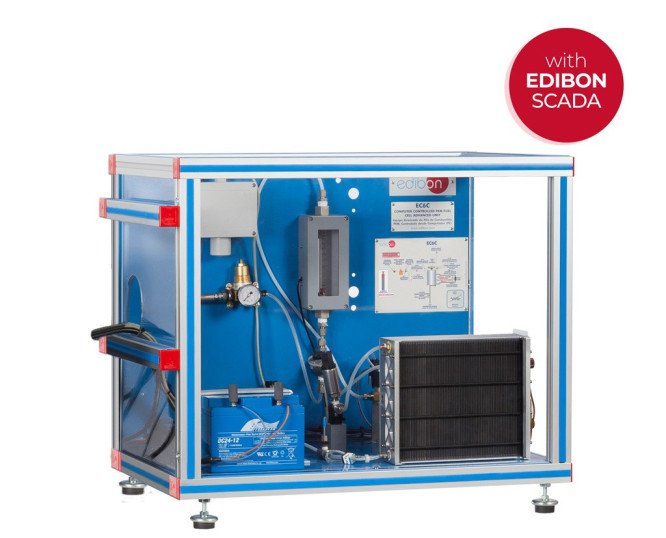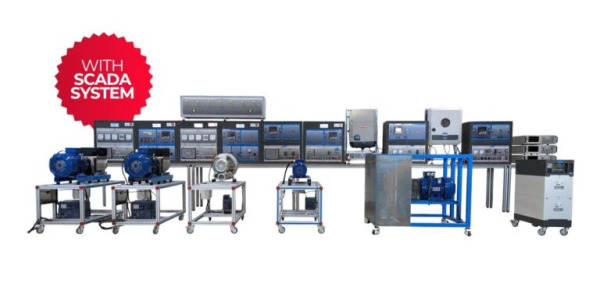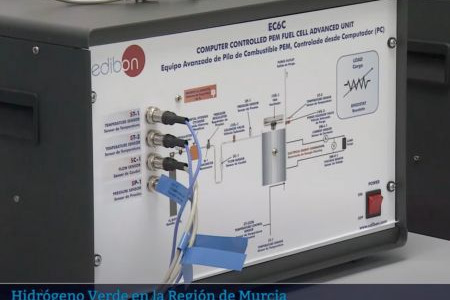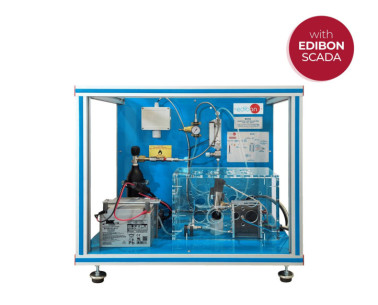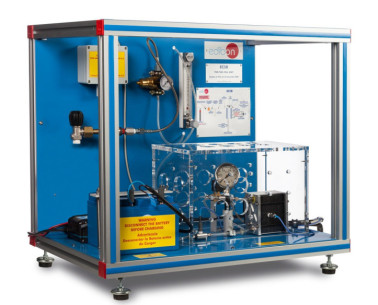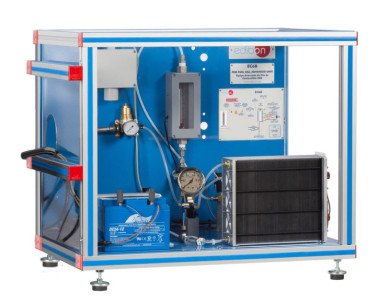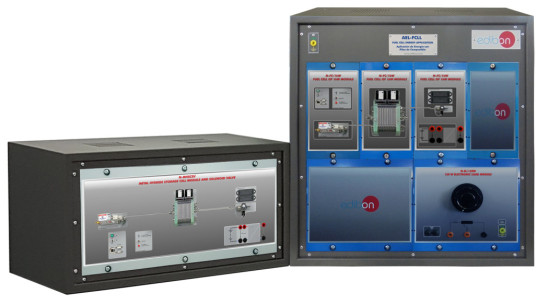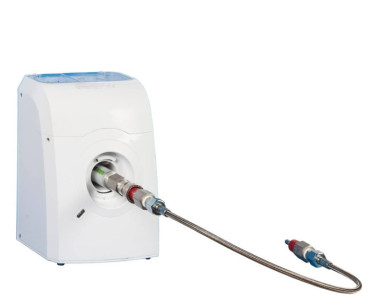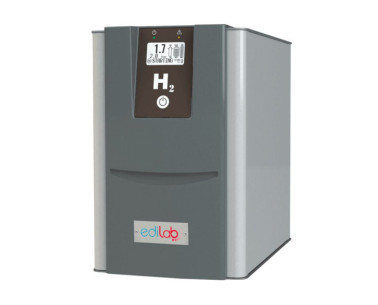EC6C Equipamento Avançado de Célula de Combustível PEM, Controlado por Computador (PC)
SISTEMAS INOVADORES
The Computer Controlled PEM Fuel Cell Advanced Unit, "EC6C", has been designed by EDIBON to allow the students to understand the fuel cells technology, especially that of a proton exchange membrane fuel cell (PEM).
Expansões
LABORATÓRIOS
NOTÍCIAS RELACIONADAS
Descrição Geral
The Computer Controlled PEM Fuel Cell Advanced Unit, "EC6C", has been designed by EDIBON to allow the students to understand the fuel cells technology, especially that of a proton exchange membrane fuel cell (PEM). It also enables to calculate several fundamental parameters of a PEM type fuel cell, such as power density, polarization curves, efficiency, etc., and the variation of some of these parameters in function of the consumption of reagents and the developed power.
The "EC6C" unit is supplied with a stack of proton exchange membrane fuel cells (PEM) with a rated power of 1000 W. The stack is composed of 72 cells with channelled plate shape that allow the air flow through the membrane. The membrane facilitates the hydrogen flow, generating the electrons release. There are separate plates which conduct electricity, allowing that electrons flow, between each pair of cells.
Cells are self-humidifying and do not require any type of external humidification.
The stack has an integrated fan that is able to provide the required air for proper operation and to maintain a suitable temperature.
Hydrogen storage represents one of the essential points regarding the hydrogen economy. For that purpose, includes two pressure regulators: one of them is prepared to be installed in the H2 bottle in order to regulate the outlet pressure at 5 – 50 bar and the other is placed at the outlet of the metal hydride bottle in order to regulate the inlet pressure to the stack in a range from 0 – 1 bar.
Two solenoid valves are included. One of them is located before the stack and controls the hydrogen inlet, and when the unit is switched off, the valve is closed to avoid any possible hydrogen leakage. The other valve, placed at the stack outlet, purges the excess of water and hydrogen outside for a proper operation.
The unit also has a load regulation system. It enables the study of the generated electrical energy, the representation of the characteristic operation curves and their comparison with the theoretical curves.
A battery supplies 12 V to the unit electronic console.
The whole electrical circuit of the stack is protected by a short-circuit unit in case of an overcurrent (30 A) and low voltage shut down (36 V).
It includes a hydrogen leak detector with a detection range from 0 – 2% Vol and from 0 – 100% L.E.L. (Lower Explosive Limit) respectively.
This Computer Controlled Unit is supplied with the EDIBON Computer Control System (SCADA), and includes: The unit itself + a Control Interface Box + a Data Acquisition Board + Computer Control, Data Acquisition and Data Management Software Packages, for controlling the process and all parameters involved in the process.
EXERCÍCIOS E PRÁTICAS GUIADAS
EXERCÍCIOS PRÁTICOS GUIADOS INCLUÍDOS NO MANUAL
- Study of the main principles of a proton exchange fuel cell (PEM) operation.
- Study of the structure and main principles of a metal hydride cylinder.
- Calculation of the efficiency of a PEM fuel cell.
- Study of the influence of air consumption and hydrogen consumption in the efficiency of a PEM fuel cell.
- Study of the power density of a PEM fuel cell.
- Representation of the polarization curve of a PEM fuel cell.
- Determination of the voltage and current density characteristics of a PEM fuel cell.
- Influence of hydrogen consumption in the electric power generation.
- Study of the influence of the generated power in the efficiency of a PEM fuel cell.
- Study of the influence of the reagents’ flows in the generation of electrical power.
- Study of the use of reagents and transport phenomena.
- Sensors calibration
EXERCÍCIOS MAIS PRÁTICOS A SEREM FEITOS COM A UNIDADE
- Many students view results simultaneously. To view all results in real time in the classroom by means of a projector or an electronic whiteboard.
- Open Control, Multicontrol and Real Time Control. This unit allows intrinsically and/or extrinsically to change the span, gains, proportional, integral, derivative parameters, etc, in real time.
- The Computer Control System with SCADA and PID Control allow a real industrial simulation.
- This unit is totally safe as uses mechanical, electrical and electronic, and software safety devices.
- This unit can be used for doing applied research.
- This unit can be used for giving training courses to Industries even to other Technical Education Institutions.
- Control of the EC6C unit process through the control interface box without the computer.
- Visualization of all the sensors values used in the EC6C unit process.
- Several other exercises can be done and designed by the user.
EQUIPAMENTOS SIMILARES DISPONÍVEIS
Equipamento de Célula combustível PEM
Equipamento Avançado de Célula de combustível PEM
Aplicação de Energia com Células de Combustível
EQUIPAMENTOS COMPLEMENTARES
Aplicação de Energia com Células de Combustível
Equipamento Avançado de Célula de combustível PEM
Equipamento de Célula de Combustível PEM, Controlado por Computador (PC)
Equipamento de Célula combustível PEM
Eletrolisador (3 Nl/h)
Eletrolisador (60 Nl/h)
Qualidade

Serviço pós-venda

 Preferências de cookies
Preferências de cookies

